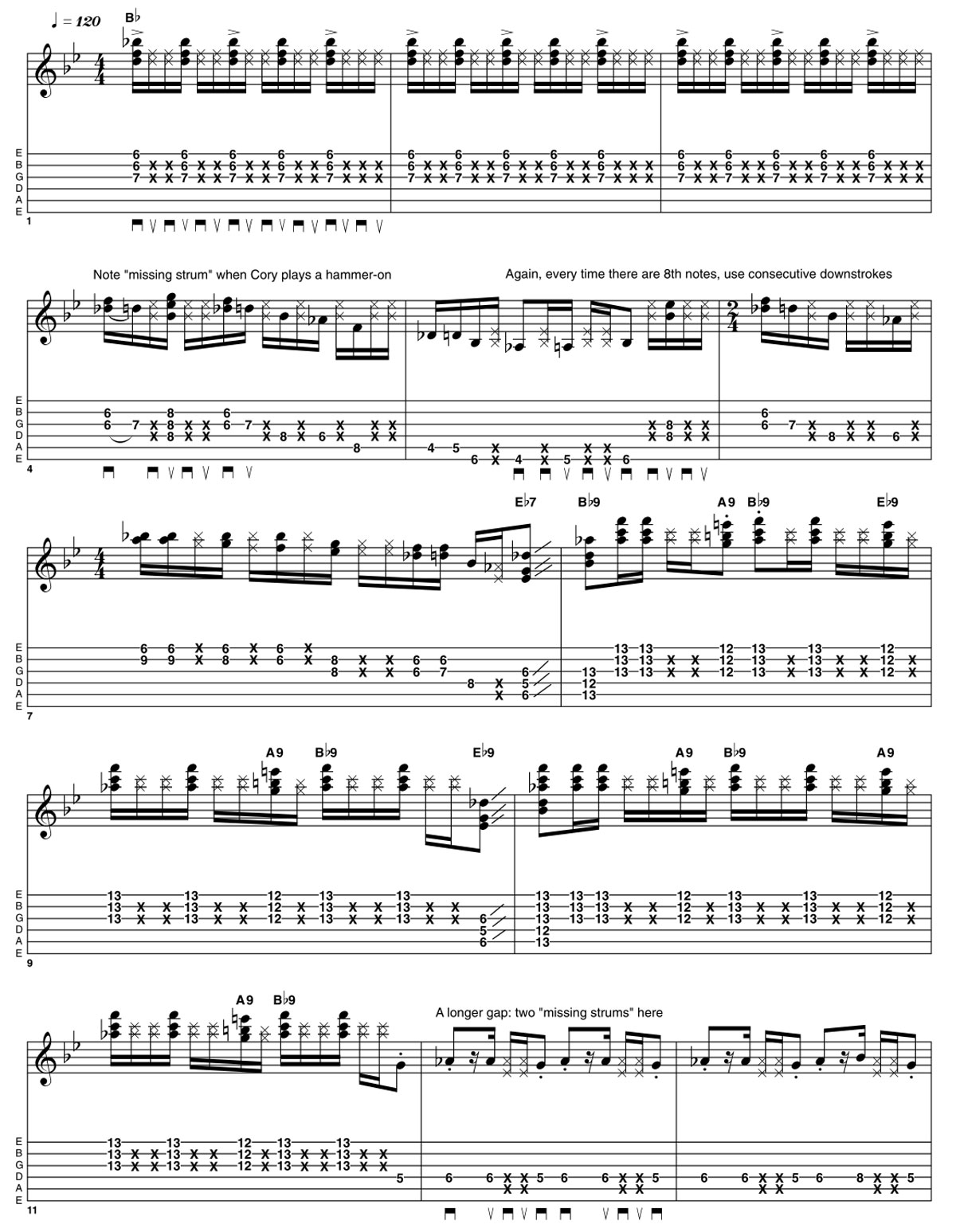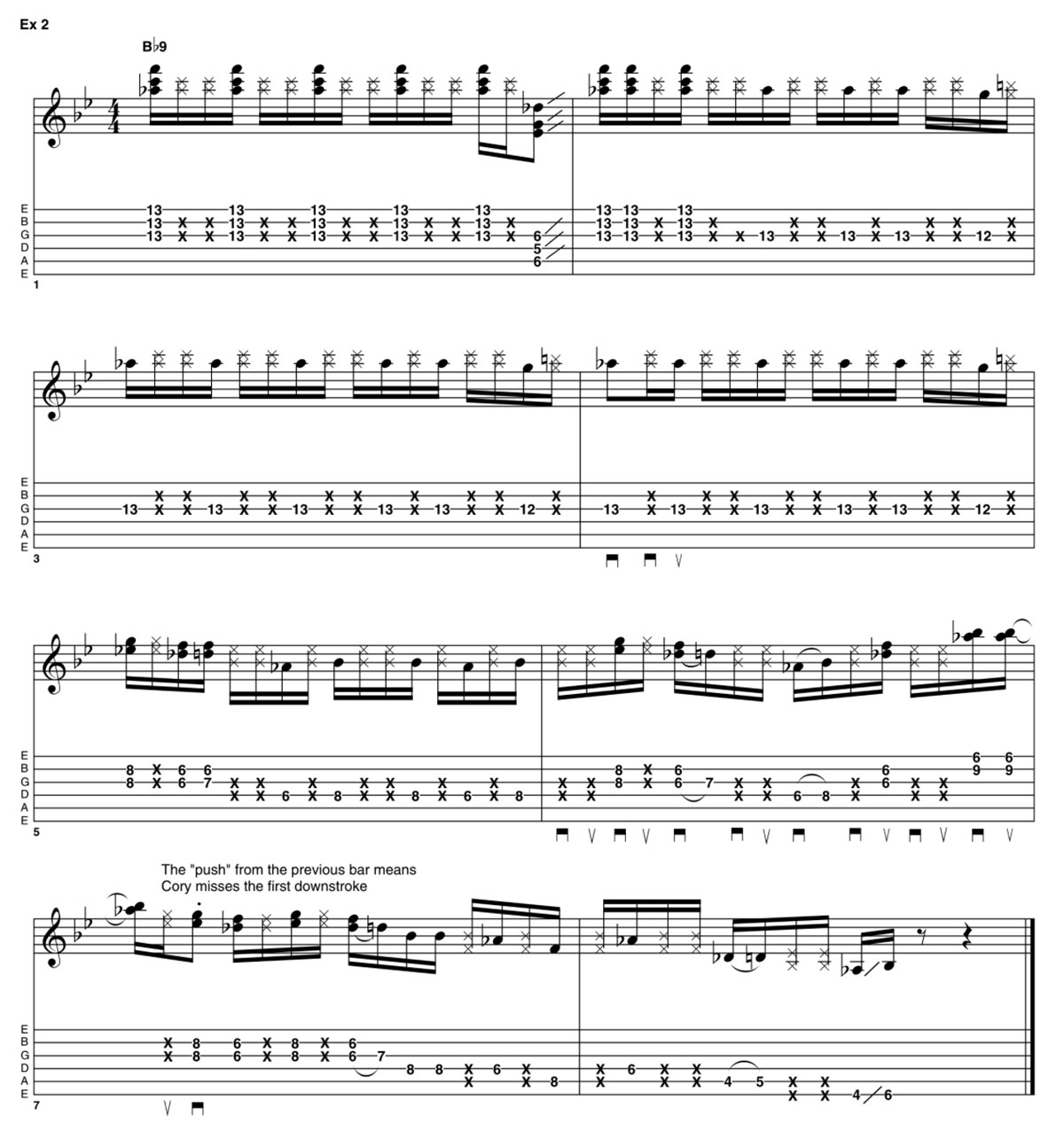Cory Wong shows you how to sharpen up your rhythmic precision in this exclusive lesson
The Vulfpeck funk maestro reveals how a solid grasp of rhythm and timing enhances every aspect of your playing, including leads

Be honest, you don't practice rhythm guitar enough, do you?
We’re all the same. Too busy with our graceful legato, gravity-defying bends and rippling neo-soul filigrees! However, it’s the rhythm and timing that hold music together, and there’s nothing quite like the crushing disappointment of listening to your amazing recording only to find that it’s all a bit sloppy and sluggish.
A good rhythmic sense benefits every aspect of your playing, not just the ‘rhythm’ parts. When you listen to a master rhythm player like Cory Wong, you hear an immediacy and precision but also a flexibility in dynamics and phrasing.
There’s only one way to achieve this – and that’s through practice! In this lesson, Cory shows us how he divides rhythm tasks between his hands.
His picking hand always maintains a steady pulse, and in the majority of funk, soul, hip-hop, pop and fusion that’s going to be 16th notes - four strums per beat (down-up-down-up).
You can let a note ring by missing the strings. Your fretboard hand is then responsible for muting the notes you don’t want to hear, cutting down chords to their essential notes, or even muting everything for a rhythmic ‘thwack’ (shown by X symbols in the tab).
Example 1. Slave to the rhythm
Cory starts by showing us how his technique can be put to use. If you’re new to this style, just start by looping the first two or four bars. This is a fairly generic pattern that can be applied to just about any chord.
All the latest guitar news, interviews, lessons, reviews, deals and more, direct to your inbox!
Things get more complex from bar 5, so watch carefully for how hammer-ons and longer notes affect the strumming pattern. Your hand is still moving in consistent 16th notes, but you don’t have to connect with the strings.
Example 2. Left-hand nuance
Based around a static Bb Mixolydian tonality again, this example has a wider range of hammer-ons and sustained notes, where you need to miss the strings with your pick.
Also note how Cory switches from three-note chords in bar 1 to single notes in bar 2. He mutes the strings selectively with his fretboard hand, meaning his strumming action remains consistent.
Example 3. The metronome zone

Demonstrating the benefit of metronome practice, Cory now plays a tight little riff using a bigger 9th chord shape. The trick here is to be able to divide your attention, listening carefully to both the metronome click and your own playing, and making tiny adjustments to the latter when necessary. This ability then translates to working with a real drummer.
Example 4. Halving the accountability

This is a great exercise whatever guitar style you play. Set the metronome to half the target tempo and count the clicks as ‘2’ and ‘4’ in 4/4 time. This mimics the snare drum backbeat and does wonders for your time feel. To demonstrate, Cory loops this basic pattern, with a few variations.
Example 5. Fantastic fours

Here's where you really test your time feel! With the metronome set to click only on the fourth beat of each 4/4 bar, Cory plays another variation on the previous example.
It’s not too difficult to get a pattern looping round like this, but the real test is being able to play more fluently, as in the last two bars. Can you keep time between the metronome beats?



